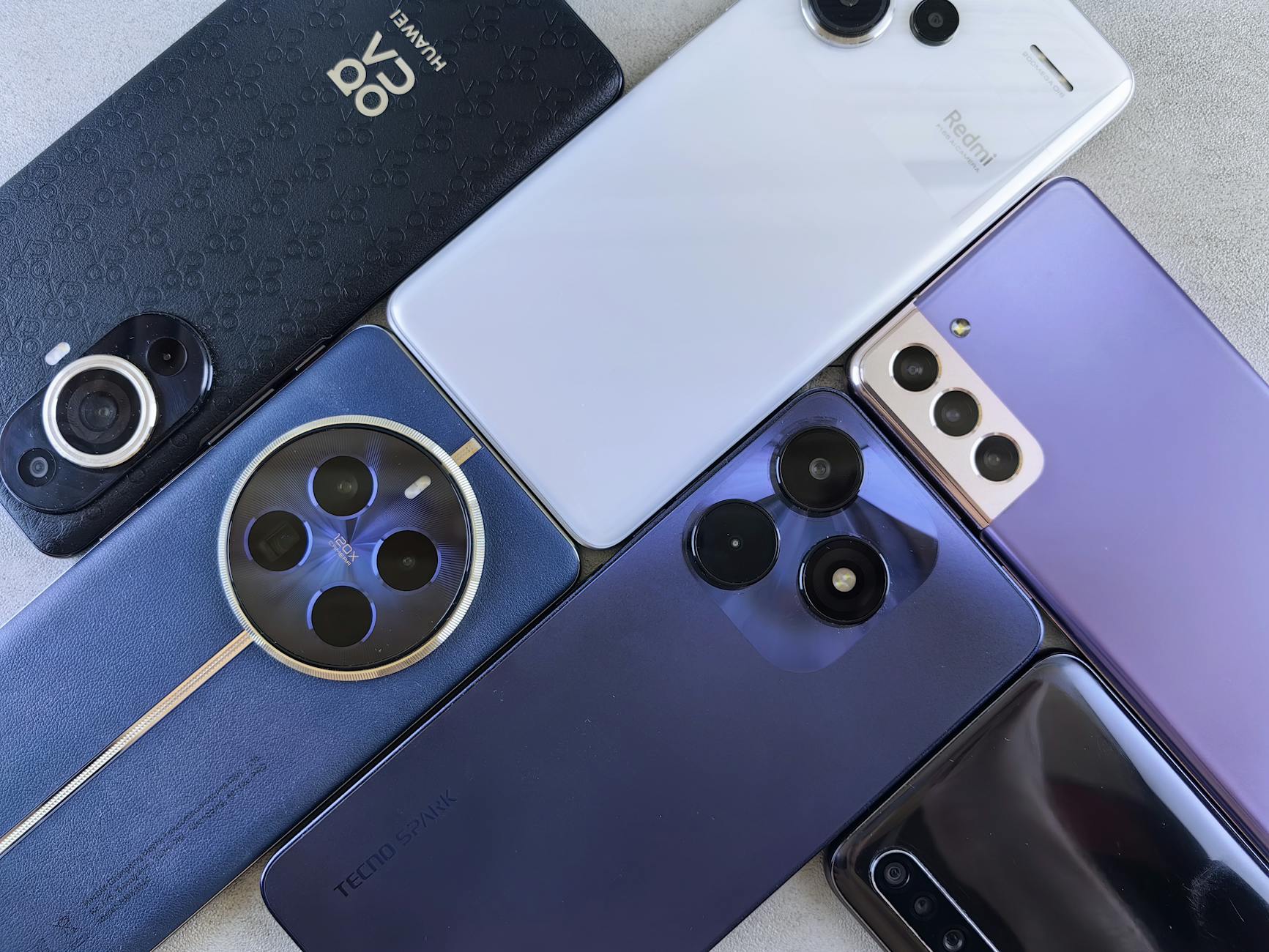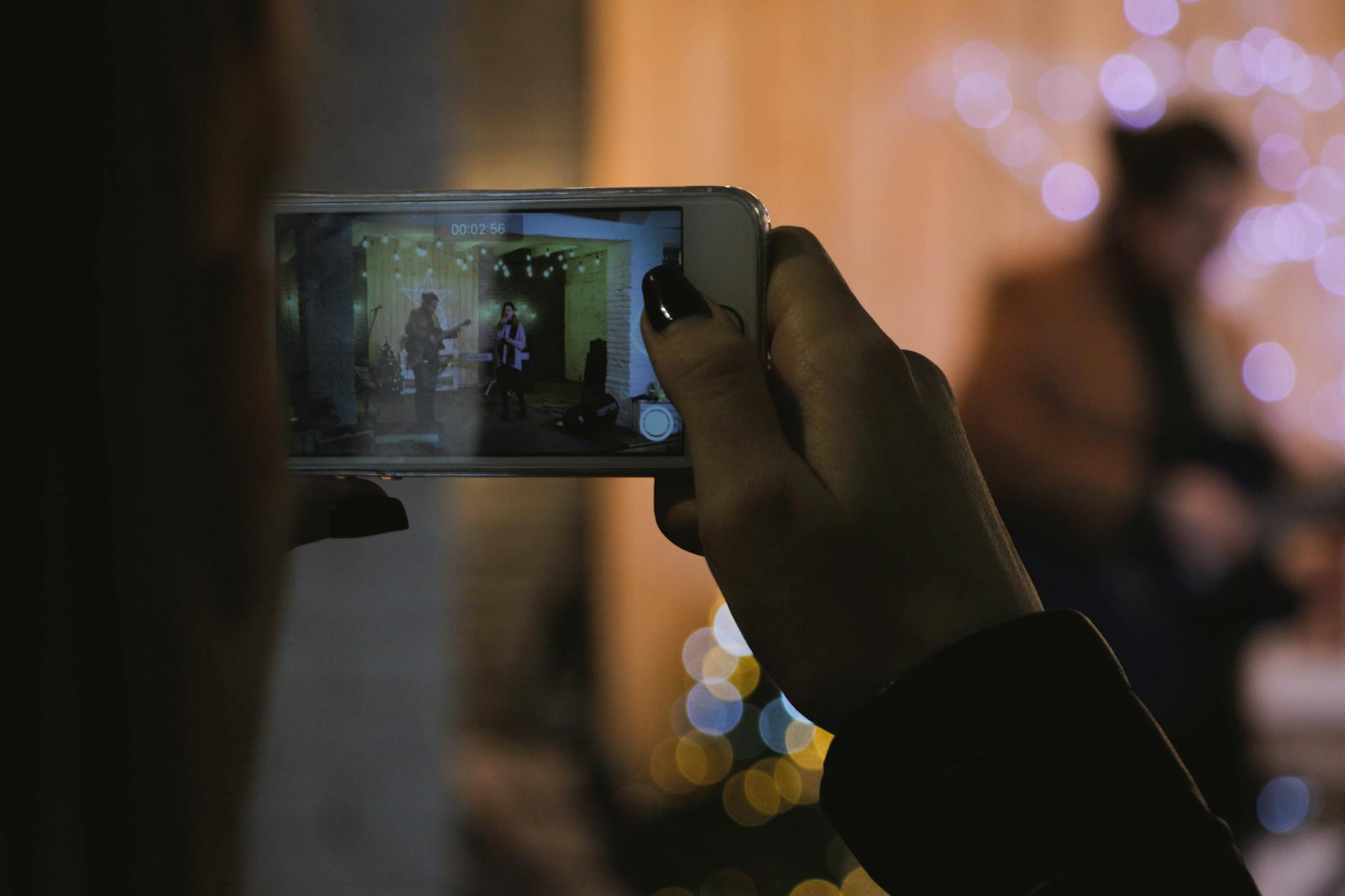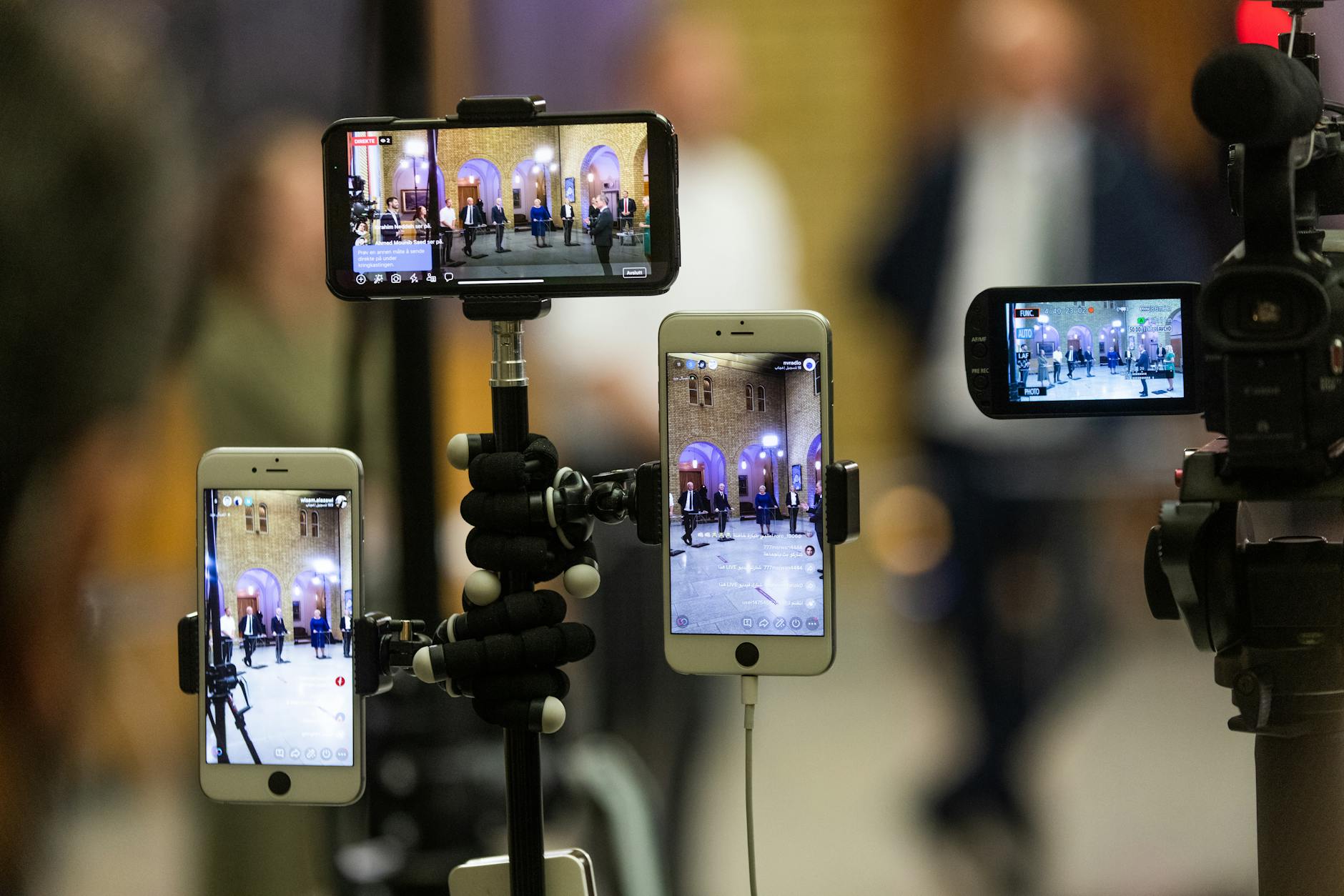
📸 Snap! Did you hear that? It’s the sound of smartphone cameras revolutionizing photography as we know it. In a world where everyone’s a potential photographer, the question isn’t just “Which phone should I buy?” but “Which phone will make my Instagram feed pop?”
If you’ve found yourself lost in a sea of megapixels, sensors, and AI enhancements, you’re not alone. With each passing year, smartphone manufacturers push the boundaries of what’s possible in mobile photography, leaving consumers both excited and overwhelmed. But fear not! We’ve done the hard work for you, testing and comparing the cream of the crop to bring you the Top 5 best smartphone cameras of the year. From the all-rounder to the low-light champion, we’ll guide you through the standout features of each device, helping you find the perfect camera phone to capture your world in stunning detail.
Criteria for Selecting the Top 5 Smartphone Cameras

Image quality and resolution
When evaluating smartphone cameras, image quality and resolution are paramount. High-quality images are characterized by:
- Sharpness and detail
- Accurate color reproduction
- Dynamic range
- Noise control
Most flagship smartphones now offer resolutions ranging from 12MP to 108MP. However, higher megapixel count doesn’t always guarantee better image quality. Factors like sensor size and pixel binning technology play crucial roles.
| Resolution | Typical Use Case |
|---|---|
| 12MP | Social media sharing, everyday photography |
| 48MP | Detailed landscapes, large prints |
| 108MP | Professional-grade shots, extreme cropping |
Low-light performance
Low-light performance is a key differentiator among smartphone cameras. Advanced features that contribute to better low-light shots include:
- Larger sensor size
- Wide aperture (lower f-stop number)
- Night mode algorithms
- Optical image stabilization (OIS)
Versatility of camera modes
Top smartphone cameras offer a variety of shooting modes to cater to different scenarios:
- Portrait mode
- Ultra-wide angle
- Macro photography
- Pro/Manual mode
Video capabilities
Video capabilities have become increasingly important in smartphone cameras. Key factors include:
- 4K and 8K recording options
- Frame rate variety (24fps, 30fps, 60fps, 120fps)
- HDR video support
- Stabilization techniques (OIS, EIS)
Now that we’ve established the criteria for evaluating smartphone cameras, let’s dive into our top picks, starting with the iPhone 14 Pro Max.
iPhone 14 Pro Max: The All-Rounder

48MP main sensor advantages
The iPhone 14 Pro Max’s 48MP main sensor brings a significant leap in image quality. This high-resolution sensor allows for:
- Enhanced detail capture
- Improved low-light performance
- More flexibility in post-processing
| Feature | Benefit |
|---|---|
| Pixel binning | Combines 4 pixels into 1 for better low-light shots |
| 2x zoom | Lossless zoom using the central 12MP of the sensor |
| ProRAW support | Greater editing potential in 48MP mode |
Impressive night mode shots
Apple’s Night mode on the iPhone 14 Pro Max sets a new standard for low-light photography. Key improvements include:
- Faster capture times
- Reduced noise in extreme low-light conditions
- Better color accuracy in challenging lighting
Cinematic mode for video
Cinematic mode now supports 4K resolution at 24fps, offering:
- Shallow depth of field effect
- Automatic focus transitions
- ability to change focus after recording
ProRAW and ProRes capabilities
For photography enthusiasts and professionals, the iPhone 14 Pro Max offers:
- ProRAW: Uncompressed 48MP images with full editing flexibility
- ProRes video: High-quality 4K video recording at up to 60fps
These features cement the iPhone 14 Pro Max’s position as a versatile, all-round performer in smartphone photography. Next, we’ll explore how the Google Pixel 7 Pro pushes the boundaries of computational photography.
Google Pixel 7 Pro: Computational Photography Master
Advanced AI processing
The Google Pixel 7 Pro’s computational photography prowess stems from its advanced AI processing capabilities. This smartphone leverages cutting-edge machine learning algorithms to enhance image quality in real-time. Here’s a breakdown of its key AI features:
- Scene recognition
- Intelligent exposure adjustment
- Noise reduction
- Super Resolution technology
| AI Feature | Benefits |
|---|---|
| Scene recognition | Optimizes camera settings for specific environments |
| Intelligent exposure | Balances highlights and shadows for perfect exposures |
| Noise reduction | Produces cleaner images, especially in low light |
| Super Resolution | Enhances details and sharpness in zoomed shots |
Outstanding portrait mode
The Pixel 7 Pro’s portrait mode sets a new standard for smartphone photography. Its AI-driven depth mapping creates a natural bokeh effect, rivaling professional cameras. Users can adjust the blur intensity post-capture, offering unparalleled flexibility.
Magic Eraser feature
One of the most impressive computational features is the Magic Eraser. This tool allows users to remove unwanted objects or people from photos with just a few taps. The AI seamlessly fills in the removed areas, maintaining the image’s integrity.
Real Tone technology for diverse skin tones
Google’s commitment to inclusivity shines through with Real Tone technology. This feature ensures accurate representation of diverse skin tones, addressing a long-standing issue in digital photography. The Pixel 7 Pro captures the nuances of all skin colors, producing natural and flattering portraits for everyone.
Now that we’ve explored the Pixel 7 Pro’s computational photography capabilities, let’s move on to the next powerhouse in our lineup.
Samsung Galaxy S22 Ultra: Zoom King

108MP main camera performance
The Samsung Galaxy S22 Ultra’s 108MP main camera is a powerhouse, delivering stunning image quality and detail. This high-resolution sensor allows for excellent cropping flexibility and produces sharp, vibrant images in various lighting conditions.
| Feature | Benefit |
|---|---|
| 108MP resolution | Exceptional detail and cropping flexibility |
| Large sensor size | Better low-light performance |
| Nona-binning technology | Improved dynamic range and reduced noise |
10x optical zoom capabilities
One of the S22 Ultra’s standout features is its impressive 10x optical zoom lens. This periscope-style telephoto camera allows users to capture distant subjects with remarkable clarity and minimal quality loss.
- Versatile focal range from ultra-wide to super-telephoto
- Space Zoom feature combines optical and digital zoom for up to 100x magnification
- Optical Image Stabilization (OIS) for steady shots at long focal lengths
8K video recording
The Galaxy S22 Ultra takes mobile videography to new heights with its 8K video recording capabilities. This feature allows users to capture incredibly detailed footage, perfect for professional-grade productions or future-proofing your memories.
Expert RAW app features
Samsung’s Expert RAW app unlocks the full potential of the S22 Ultra’s camera system, providing advanced controls and features for photography enthusiasts:
- RAW image capture for maximum editing flexibility
- Manual controls for ISO, shutter speed, and focus
- Multi-frame noise reduction for improved low-light performance
- Astrophotography mode for capturing stunning night sky images
With its versatile camera system and advanced features, the Samsung Galaxy S22 Ultra truly earns its title as the “Zoom King” among smartphone cameras. Next, we’ll explore another impressive contender in the world of mobile photography: the Sony Xperia 1 IV.
Sony Xperia 1 IV: Professional-Grade Camera Phone

True optical zoom lens
The Sony Xperia 1 IV stands out with its innovative true optical zoom lens, a feature that sets it apart from other smartphone cameras. Unlike digital zoom, which simply crops and enlarges the image, the Xperia 1 IV’s optical zoom maintains image quality throughout the zoom range.
- Focal length range: 85-125mm (35mm equivalent)
- Smooth zoom transition
- Consistent image quality at all zoom levels
Manual controls for photo and video
Professional photographers and videographers will appreciate the extensive manual controls offered by the Xperia 1 IV:
- Shutter speed adjustment
- ISO settings
- White balance control
- Focus peaking
- Zebra pattern for exposure
These features allow for precise control over the image-making process, rivaling dedicated cameras.
4K HDR 120fps video recording
The Xperia 1 IV pushes the boundaries of smartphone video capabilities:
| Feature | Benefit |
|---|---|
| 4K resolution | Ultra-sharp detail |
| HDR support | Enhanced dynamic range |
| 120fps frame rate | Smooth slow-motion playback |
This combination of features enables users to capture professional-quality footage directly from their smartphone.
Eye AF and object tracking
Sony’s renowned autofocus technology finds its way into the Xperia 1 IV:
- Real-time Eye AF for humans and animals
- Object tracking for moving subjects
- AI-powered focus algorithms
These advanced focusing capabilities ensure that your subjects remain sharp and in focus, even in challenging shooting conditions.
With its professional-grade features, the Sony Xperia 1 IV blurs the line between smartphone and dedicated camera, offering unparalleled control and quality for mobile photography enthusiasts.
Vivo X90 Pro+: Low-Light Champion

1-inch sensor advantages
The Vivo X90 Pro+ boasts a groundbreaking 1-inch sensor, setting it apart from its competitors. This larger sensor offers several key advantages:
- Improved light capture
- Enhanced dynamic range
- Better low-light performance
- Reduced noise in images
| Feature | Benefit |
|---|---|
| Larger pixel size | Captures more light, resulting in cleaner images |
| Increased sensor area | Allows for better depth of field control |
| Higher sensitivity | Produces brighter images in low-light conditions |
Zeiss T* lens coating
The Zeiss T* lens coating on the Vivo X90 Pro+ enhances image quality by:
- Reducing lens flare
- Minimizing ghosting effects
- Improving contrast and color accuracy
- Enhancing overall image sharpness
V2 chip for image processing
Vivo’s proprietary V2 chip takes image processing to the next level:
- Real-time HDR processing
- Advanced noise reduction
- Improved color science
- Faster autofocus capabilities
Impressive dynamic range
The X90 Pro+ excels in capturing a wide dynamic range, thanks to its hardware and software optimizations:
- Multi-frame HDR processing
- AI-assisted scene recognition
- Adaptive exposure compensation
- Highlight and shadow recovery
These features combine to produce stunning images with rich details in both bright and dark areas, making the Vivo X90 Pro+ a true low-light champion in the smartphone camera world.

Smartphone cameras have come a long way, offering incredible photography capabilities that rival professional equipment. This year’s top contenders showcase remarkable advancements in image quality, versatility, and cutting-edge features. From the iPhone 14 Pro Max’s all-round excellence to the Google Pixel 7 Pro’s computational photography prowess, each device brings something unique to the table.
Whether you’re a casual shooter or a mobile photography enthusiast, there’s a smartphone camera to suit your needs. The Samsung Galaxy S22 Ultra excels in zoom capabilities, while the Sony Xperia 1 IV caters to those seeking professional-grade control. For low-light situations, the Vivo X90 Pro+ stands out as a formidable option. As smartphone cameras continue to evolve, we can only anticipate even more impressive innovations in the coming years.
